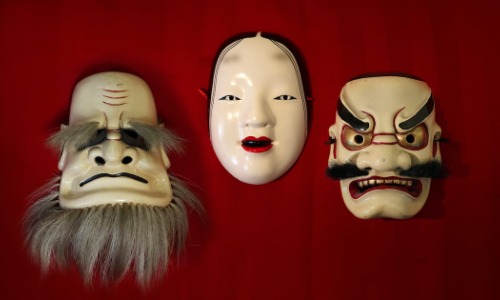For the samurai class, supporting artists became one way to gain cultural and social prestige.
This support served to bridge the gap between the samurai class and the court nobility centered around the emperor in the capital.
Among those whom the Ashikaga Shogun Yoshimitsu protected, the most significant artists were Zeami and his father Kan’ami, who were not only actors who performed on stage themselves but also outstanding playwrights.
They combined acrobatics, circus acts, magic, slapstick imitation, and so on, known as Zōgei, which came from China during the Nara period, and a dance called Dengaku, which was born as an agricultural ritual, with music and masks, and masterpieces of literature such as “The Tale of the Heike” and “The Tale of Genji”, developing it into a performing art called “Noh.”
Kan’ami wrote an excellent artistic theory book called “the tradition of the flower of acting style.”
In it, the most famous phrase for Japanese is “Enter the form, then exit from the form.”
This means that true originality is born from imitation.
You thoroughly imitate what you think is wonderful. You breathe as if it were you, your body moves in that way, all your muscles and breath become just like that unconsciously, and after going through that stage, what comes up is originality.
I think this is where it differs from Western civilization’s concept of originality.
